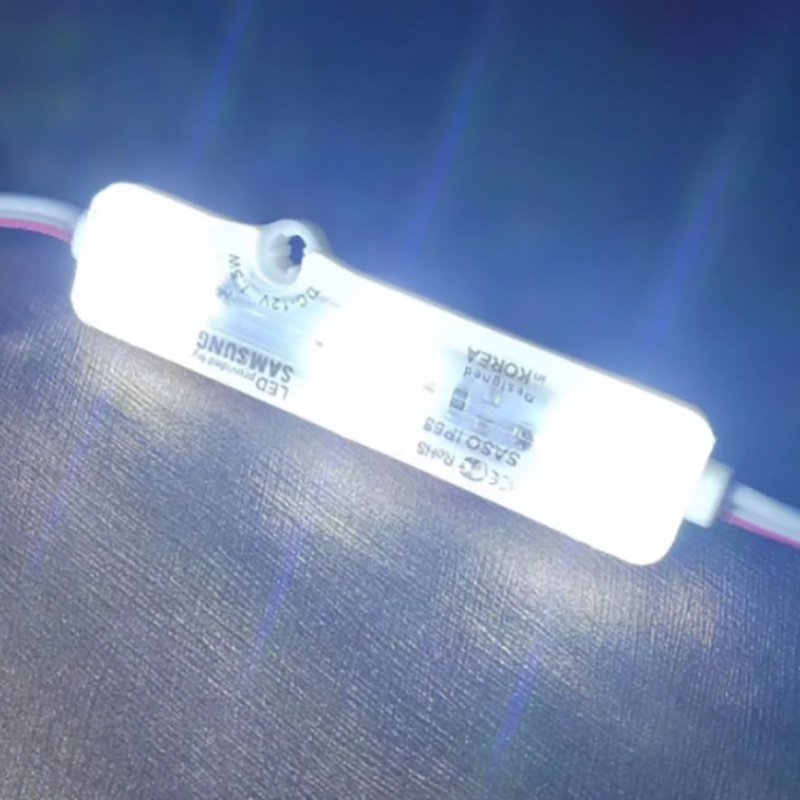The LED (Light Emitting Diode) models are a kind of LED device that can be plugged into other compatible units or can function alone as well. While earlier the LED modules were used for business purposes (for instance the channel letters and the signages) only, there today used in a variety of outdoor and indoor settings and for lighting applications as well. Read the article and information given below to know all about the LED light modules, their types and varieties available, and their common uses.
What is an LED light module?
The LED light module typically has multiple LED emitters. A board and fixture contain all these LEDs and provides power to them. The entire assembly acts as a single unit. The assembly contains a semiconductor on which a voltage is applied. When the electrons are energized and can run loose, they start to emit light energy.
The power of the assembly may come from a battery or from any other power source such as the AC current. Since the module consists of an electrified semiconductor, it can emit the lights and the energy as photons in many different colors. Therefore, an LED module can provide you the lights in a rainbow of colors and in different shades. That is why the LED display module has been used widely for advertising purposes since its discovery.
A typical LED display module will consist of a cell that is wrapping a PCB (Printed Circuit Board). There are also the LED bead arrays found on the module that is arranged to take the form of a certain pattern.
New Technologies Being Introduced in LED Modules
The highly illuminated and colorful LED lights also score over their conventional counterparts due to the new and evolving technologies that they incorporate. Some of the latest technological trends improving the LED modules and lights include:
Plug-and-Play: the new LED module that incorporates plug-and-play technology comes with an integrated circuit (IC) that is fixed on board. Hence the components of the LED module are not required to be attached externally anywhere.
Remote Phosphor: new technology can provide for lesser heating and a reduction in color shifts. LED modules having this new technology also have a better life cycle and can provide for good energy efficiency.
Bluetooth wireless communication: LED modules can also be connected wirelessly through the sensors and switches. Such LED modules incorporating the Bluetooth wireless communication technology can be controlled through smartphones as well and are quite energy efficient.
Variety of LED modules
In due course of time, many different and new LED module types and applications are available. An LED module can serve the very specific purpose that you want when you can choose the right type and variety of LED light modules.
Based on their forms, the LED light module can be rectangular or circular. However, with some search, you can also find the star, linear, and square-shaped LED module.
* Side LED module: the side LED modules can be used for illuminating home interiors, and parts and items including the large cabinets.
* Flex LED Strip Module: the highly versatile variety of LED light modules can also be further modified to take different shapes. For instance, the flex LED strips can be used for highlighting the signages, acrylic letters, and their intricate wording.
* Back LED module: this type and variety of LED modules are often used for lighting up or highlighting the inner parts and items including the channel letters, cabinets, and boxes.
Classification of LED Module Based on Size
Based on the size, the LED light models can be classified into small, standard, and large LED modules.
Small LED Module
when you are looking for a light fixture in limited spaces, the small LED module can be a good choice. These models can often be found in the display units and the signages, as well as in the events and celebrations including weddings and parties. The safe and versatile variety of LED modules does not cause problems including heating or flickering and is energy efficient.
Standard LED Module
this module can be good for external (outdoor LED matrix) use and outdoor applications. They also have a waterproof rating including the IP65 rating and can be more reliable. They may have good reach and possess features including the integrated heat sink and the VHB tapes. Such features and characteristics provide for benefits including reduced color deviation and light degradation.
Large LED Module
The large LED module offers greater return depth. Return depth is defined as the space between the surface and the LED emitters. A return depth of 50 mm or more (found in the large LED modules) provides for the precise observance of the LED module and each LED chip even from greater distances. Apart from a wide beam angle, the large LED modules can also be more power-efficient.
Uses of LED Modules
As stated earlier, the LED light modules have been used in outdoor and indoor applications as well, apart from business applications including signage. With many variations, fixtures, and varieties available, the LED light module has now grown to be even more versatile. Some of the common uses of the LED module and the lighting fixtures include:
* Decoration of the patios or the outdoor gardens.
* The smallest steps of the LED module can also be used for highlighting the drawers, cabinets, and other indoor items.
* The vibrant and the different shades of light that the LED module can throw can also accentuate certain bathroom parts including the plants and mirrors.
* The LED module can be a very powerful night lamp that can be used for reading and other purposes.
* LED light modules can also be put in automobiles, cars, and vehicles. They can light up the dashboard or any other part of the interior of a vehicle
* One can improve the ambiance and looks of his/her home interiors by lighting them up with various shades of light and colors.
* LED light modules have also been used for the headlamps and flashlights.

